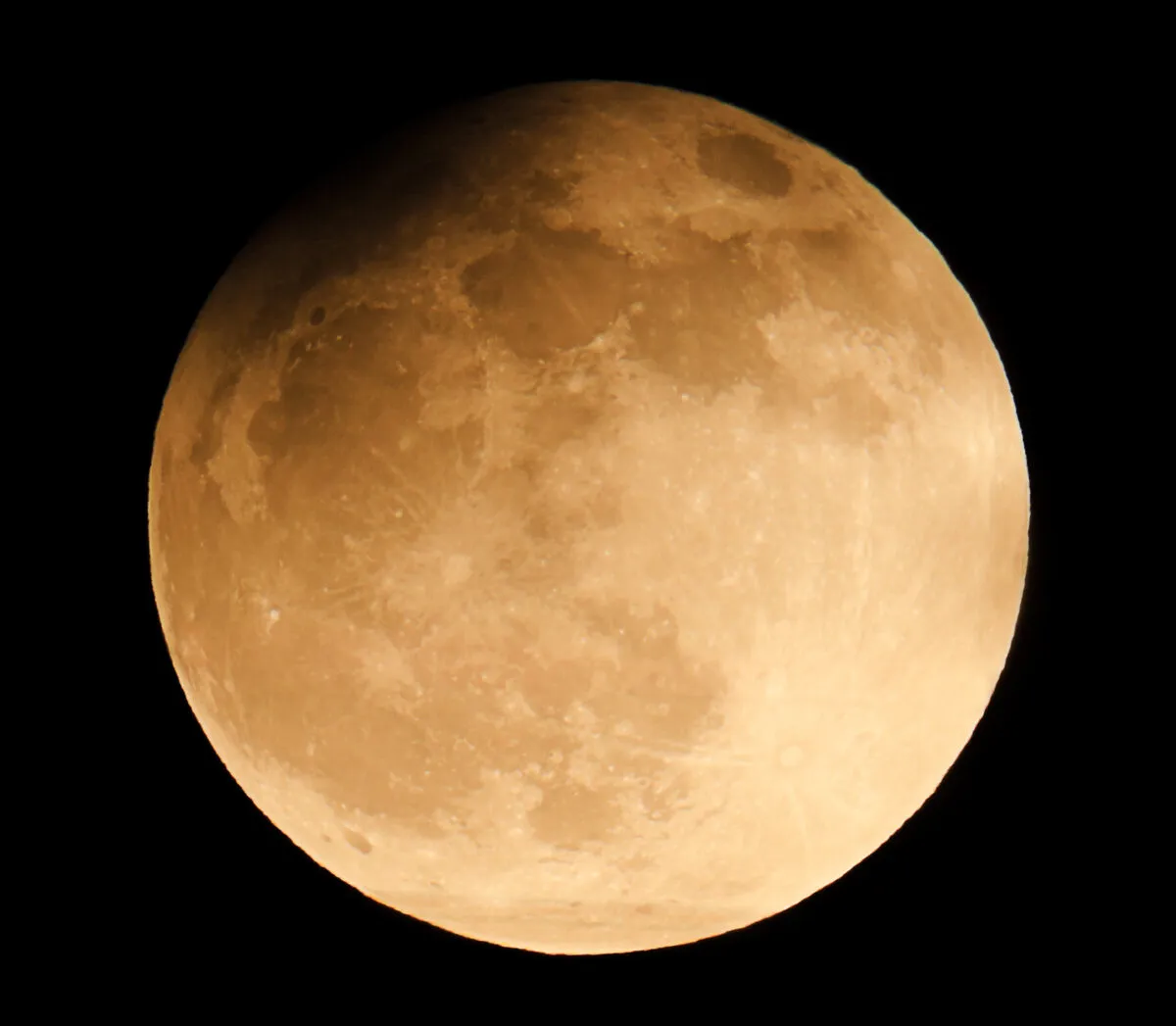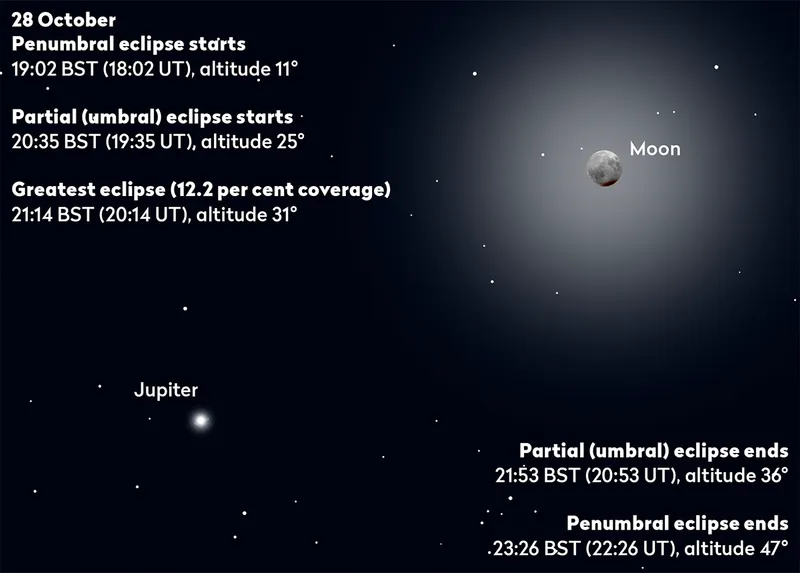The Moon passes into Earth’s shadow on 28 October, creating a lunar eclipse that's well positioned for the UK.
In this guide we'll reveal the key times and phases of the lunar eclipse and what you'll see during each stage.
The 28 October lunar eclipse will be an interesting event because the Moon will graze the northern edge of the darkest portion of the shadow.
This results in a small ‘bite’ appearing to be taken out of the Moon’s southern edge.
Find out when the next eclipse is taking place

From Earth, the Sun has an apparent size around half-a-degree. In other words, it’s an extended rather than a point-source of light.
As a result, unlike a total lunar eclipse, it won't necessarily be completely clear what's happening and when, and so it pays to be aware of the key times of this partial lunar eclipse.
For more stargazing advice every week, sign up to receive the BBC Sky at Night Magazine e-newsletter and listen to our Star Diary podcast.
What causes a partial lunar eclipse?

From the Moon’s orbital distance, Earth’s shadow has two components: a weak outer part known as the penumbral shadow and a dark inner part called the umbral shadow.
A spacecraft within the outer part of the penumbra would see a tiny fraction of the Sun’s disc clipped by Earth.
If the craft moved further inside the penumbral shadow towards the umbral shadow, the amount of clipping – essentially a partial eclipse of the Sun – would increase.
Just outside of the umbral shadow, all but a tiny amount of the Sun’s light would be hidden from view.
Pop inside the umbra and all of the Sun’s light would be hidden.
Key times and phases

In the early evening sky on 28 October, although you can’t see it, the penumbral shadow will span an apparent diameter around 4.7 times the apparent diameter of the Moon.
The umbral shadow’s apparent diameter will be around 2.7 times larger than the apparent diameter of the Moon, both shadows being arranged concentrically like a bull’s-eye target.
19:02 BST (18:02 UT) - the Moon enters the penumbral shadow.
The outer part of this shadow is so weak that you’re unlikely to see anything at this time.
However, over the next 1.5 hours you should be able to see a subtle darkening, most obvious near the Moon’s southwest limb.
20:35 BST (19:35 UT) - the Moon’s limb will be touching the umbral shadow.
This point in time marks the start of the partial eclipse.
As mentioned, this is a small partial eclipse, just a glancing blow of the umbral shadow.
21:14 BST (20:14 UT) - maximum eclipse occurs
Around 12% of the Moon’s diameter will be covered by the umbral shadow.
This translates as around 6% of the Moon’s disc being eclipsed.
21:53 BST (20:53 UT) - the partial eclipse ends
This is when the Moon slips out of the umbral shadow.
It then takes around 1.5 hours for the Moon to slowly leave the subtlety of the weak penumbral shadow.
23:26 BST (22:26 UT) - the entire eclipse is over
Are you observing or even photographing the partial lunar eclipse? Let us know by emailing contactus@skyatnightmagazine.com
This guide appeared in the October 2023 issue of BBC Sky at Night Magazine.

